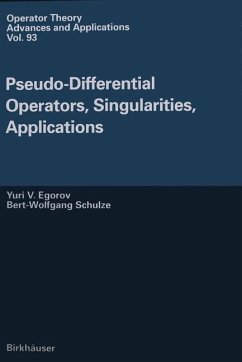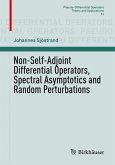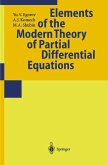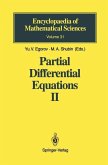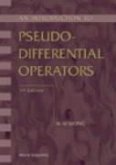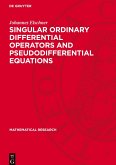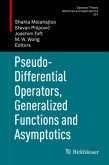This book grew out of lecture notes based on the DMV seminar "Pseudo- Differential Operators, Singularities, Applications" held by the authors in Reisenburg-Günzburg, 12-19 July 1992. The modern theory of elliptic boundary value problems in domains having conical or edge singularities on the boundary as well as the classical theory of elliptic boundary value problems and the original Kondratiev theory are presented. This material forms the foundation for the second part of the book which contains a new construction of pseudo-differential operators with symbols corresponding to the singularities of the boundary of different dimensions. This allows in particular to obtain complete asymptotic expansions of solutions near these singularities.
Pseudo-differential operators belong to the most powerful tools in the analysis of partial differential equations. Basic achievements in the early sixties have initiated a completely new understanding of many old and important problems in analy sis and mathematical physics. The standard calculus of pseudo-differential and Fourier integral operators may today be considered as classical. The development has been continuous since the early days of the first essential applications to ellip ticity, index theory, parametrices and propagation of singularities for non-elliptic operators, boundary-value problems, and spectral theory. The basic ideas of the calculus go back to Giraud, Calderon, Zygmund, Mikhlin, Agranovich, Dynin, Vishik, Eskin, and Maslov. Subsequent progress was greatly stimulated by the classical works of Kohn, Nirenberg and Hormander. In recent years there developed a new vital interest in the ideas of micro local analysis in connection with analogous fields of applications over spaces with singularities, e.g. conical points, edges, corners, and higher singularities. The index theory for manifolds with singularities became an enormous challenge for analysists to invent an adequate concept of ellipticity, based on corresponding symbolic structures. Note that index theory was another source of ideas for the later development of the theory of pseudo-differential operators. Let us mention, in particular, the fundamental contributions by Gelfand, Atiyah, Singer, and Bott.
Pseudo-differential operators belong to the most powerful tools in the analysis of partial differential equations. Basic achievements in the early sixties have initiated a completely new understanding of many old and important problems in analy sis and mathematical physics. The standard calculus of pseudo-differential and Fourier integral operators may today be considered as classical. The development has been continuous since the early days of the first essential applications to ellip ticity, index theory, parametrices and propagation of singularities for non-elliptic operators, boundary-value problems, and spectral theory. The basic ideas of the calculus go back to Giraud, Calderon, Zygmund, Mikhlin, Agranovich, Dynin, Vishik, Eskin, and Maslov. Subsequent progress was greatly stimulated by the classical works of Kohn, Nirenberg and Hormander. In recent years there developed a new vital interest in the ideas of micro local analysis in connection with analogous fields of applications over spaces with singularities, e.g. conical points, edges, corners, and higher singularities. The index theory for manifolds with singularities became an enormous challenge for analysists to invent an adequate concept of ellipticity, based on corresponding symbolic structures. Note that index theory was another source of ideas for the later development of the theory of pseudo-differential operators. Let us mention, in particular, the fundamental contributions by Gelfand, Atiyah, Singer, and Bott.

